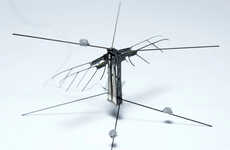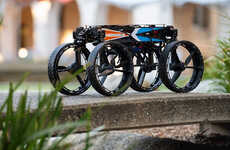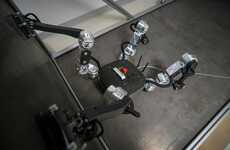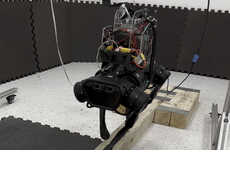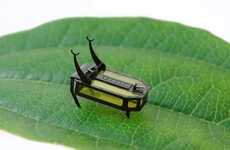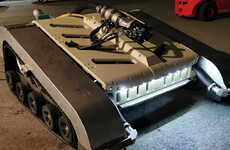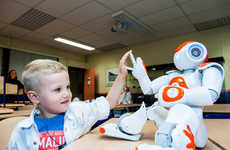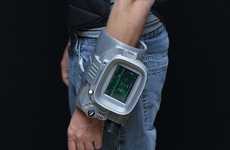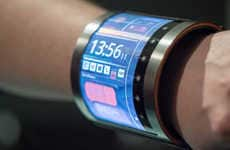
This Robotic Cockroach Can Access Tight Spaces Inside Rubble
Rahul Kalvapalle — February 9, 2016 — Tech
References: news.berkeley.edu & pnas.org
A group of engineers at the University of California, Berkeley are developing a robotic cockroach that is capable of squeezing into the tightest and smallest of spaces, the likes of which are created by rubble following an explosion or collapse of a large structure.
Dubbed the Compressible Robot with Articulated Mechanisms or CRAM, this robotic cockroach is fitted with legs that sprawl outwards when it is put under pressure from above. The bumps along its edges resemble the spines on a cockroach, while the soft upper shell protects the robot's electronics from damage.
This robotic cockroach could be used a first-responder in the wake of explosions and collapses, and could be used to explore inside rubble and collect information that would be of use to rescuers as they go about finding survivors.
Dubbed the Compressible Robot with Articulated Mechanisms or CRAM, this robotic cockroach is fitted with legs that sprawl outwards when it is put under pressure from above. The bumps along its edges resemble the spines on a cockroach, while the soft upper shell protects the robot's electronics from damage.
This robotic cockroach could be used a first-responder in the wake of explosions and collapses, and could be used to explore inside rubble and collect information that would be of use to rescuers as they go about finding survivors.
Trend Themes
1. Robotic First Responders - Developing robots that can access disaster-stricken areas and collect valuable information for rescue workers
2. Compressible Robotics - Designing robots that are capable of fitting through tight spaces without causing damage to its surrounding environment
3. Rubble-exploring Robotics - Creating robots that can enter and maneuver throughout the rubble to locate survivors after a disaster
Industry Implications
1. Search & Rescue - Using CRAM to explore disaster-stricken areas and assist first responders
2. Robotics Manufacturing - Producing CRAM and similar robots that can be utilized for search and rescue missions
3. Military & Defense - Applying CRAM or similar technology for exploring confined indoor and outdoor spaces
2.8
Score
Popularity
Activity
Freshness

